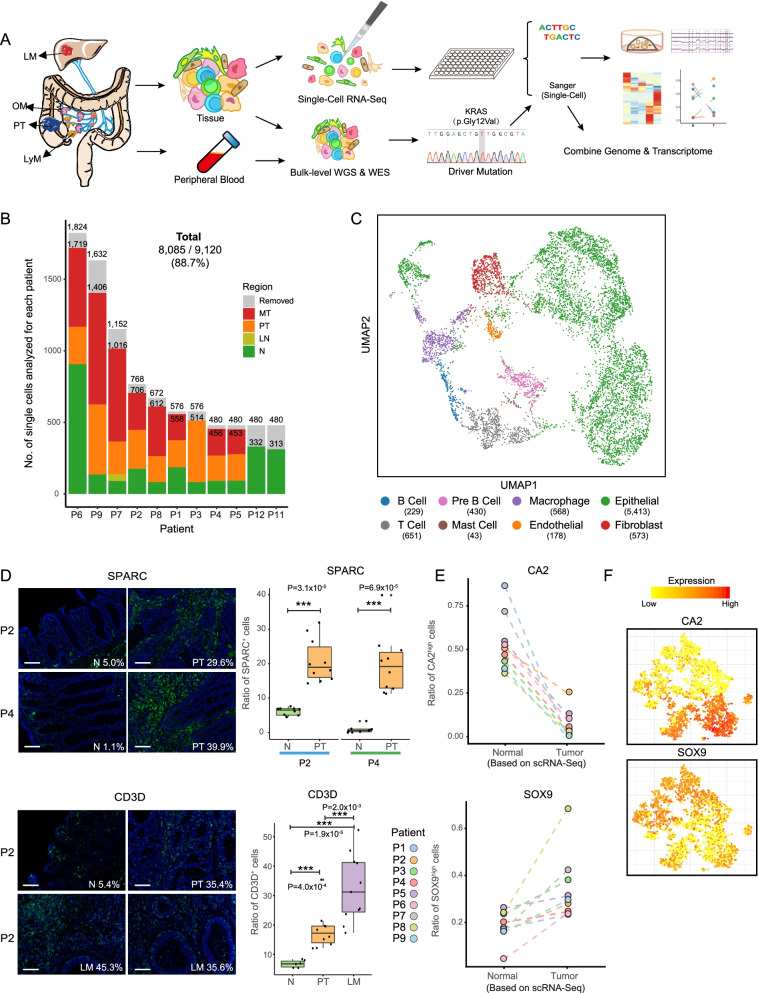Fig. 1.
Single-cell transcriptome analysis of colorectal cancer. A The workflow illustrates the strategy for cell collection from matching adjacent normal tissues and primary and metastatic colorectal tumors for single-cell RNA-Seq, single-cell cDNA Sanger sequencing, and bulk level whole genome sequencing and whole exome sequencing. B Bar plot showing the number of cells collected from each patient. Patients are ordered according to the total number of cells. Color represents cell origin. Low-quality cells are removed with strict criteria. Only cells that expressed at least 1000 genes and showed second maximum pairwise Pearson correlations greater than 0.6 were retained for further analysis. Finally, 8085 cells (88.7%) were retained for subsequent analyses. The details can be found in the “Methods” section. PT: primary tumors. LN: adjacent normal tissue collected from liver. N: adjacent normal tissues. MT: metastatic tumors, including lymph node metastasis, liver metastasis, and omentum metastasis. Removed: cells that have not passed the quality control and not used for subsequent analysis. C UMAP plot of cell clusters. Cell types were identified base on the regulon activity matrix and then visualized by UMAP. Cells were colored according to annotated cell types. According to their expression of known marker genes shown in Supplementary Figure 1B, we annotated these clusters as epithelial cells, endothelial cells, fibroblasts, T-cells, B-cells, pre-B-cells, macrophages, and mast cells. Associated with Supplementary Figure 1A and Supplementary Figure 1C-D. Most of the immune cells, fibroblast, and endothelial cells come from the tumor area. D Immunofluorescence staining of the shared endothelial and fibroblast marker SPARC and T-cell marker CD3D in adjacent normal tissues, primary tumor, and liver metastasis. The boxplot shows the SPARC- or CD3D-positive cell ratio in different regions (N: adjacent normal tissue; PT: primary tumor; LM: liver metastasis). Scale bar, 100μm. E The dot plot shows the ratio of cells that highly expressed enterocyte marker (CA2) and intestinal stem cell marker (SOX9) in normal and tumor regions for each patient. F The expression levels of enterocyte marker (CA2) and intestinal stem cell marker (SOX9) were projected on epithelial cells tSNE maps. Colors from yellow to red represent expression levels from low to high

